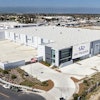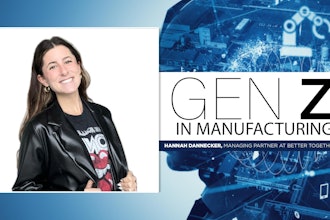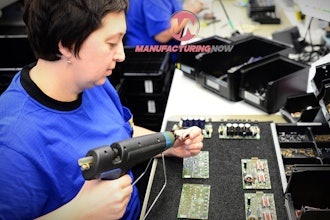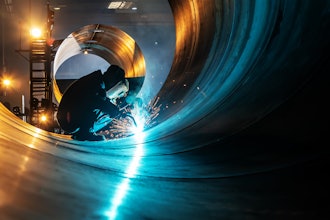A few weeks ago, I wrote about mobile technology in manufacturing, but the topic glossed over what is a hotly hyped component in the bigger picture: tablets. Between consumer offerings and adaptations made for the manufacturing or supply chain space, tablets are getting all the attention right now, and for good reason. They're small enough to be mobile, powerful enough to chew through ever-increasing amounts of data, and big enough to get work done. If you're looking to get into the mobile space for your operations, tablets just might be the right fit. If the last two years have been any indication, the market is only going to get bigger.
The tablets in manufacturing are typically from one of two camps: consumer tablets adapted for use on the plant floor or the DC, and rugged Windows machines that can take a beating. Which would be best for you?
Consumer-turned-tough
Pol Sweeney, CTO of Airclic, a mobile software provider, doesn't like to attribute the tablet revolution entirely to the iPad, as many technology writers have. While it's certainly sold effortlessly in the consumer market, Google's Android operating system is much more popular in the manufacturing and supply chain space. Sweeney says these tablets "certainly put out the challenge to organizations: Can we take a device that is highly usable and put that in our environment?" Answering that question relies upon a number of considerations.
In the consumer tablet market, most offerings start in the $400-500 range. They're thin, light and capable of running fairly complex programs without getting too bogged down. They can also be cheap, depending on the desired screen size and necessary specifications. The most popular versions run either Apple's iOS or Google's Android operating systems, but others are available with RIM's BlackBerry or HP's now-defunct Palm OS as well. Of course, they're also fairly fragile, with glass screens that are susceptible to significant cracks if the device is dropped from even the smallest of heights.
Sweeney says manufacturers often begin with an Android tablet like the Samsung Galaxy Tab (or dozens of other contenders), adapt it with a rugged case to protect its delicate components from bumps along the way, and find the right software provider to overhaul the applications into something that can be productive and cost-effective in the long haul. In other words: Making sure the employees aren't just playing Angry Birds all day. In many cases, however, companies are finding that these tables just aren't enough.
'Rugged' Tablets
Companies like Panasonic have pioneered the rugged computer for industrial applications for years, well before the iPad was ever dreamed up on Apple's campus. They have, generally speaking, perfected the rugged tablet market with the likes of the ToughBook H2, which is a fully-fledged computer packed into a smaller, touch-friendly space. There are a few significant differences between something like the ToughBook and a consumer Android devices, however. First of all, they're extremely durable. The ToughBook H2 can handle up to a 30" drop, which would make an iPad or a Galaxy Tab beg for mercy. It's also significantly more powerful, using laptop processors and graphics accelerators, not ones typically used in smartphones. This can help it take on more intensive tasks, which, depending on the complexity of your system, could be a necessity.
Many of these rugged, industrial-specific tablets also operate on a full-fledged version of Windows, not a mobile operating system, like iOS. Of course, this requires more computing power, but it also opens up the device to a significantly higher amount of customization and flexibility. Most software runs on Windows, and these devices are also capable of using a wider variety of accessories, such as barcode scanners or another kind of proprietary equipment. Unfortunately, they are also significantly more expensive than their consumer counterparts.
The chart below demonstrates some of the differences and similarities between the different categories:
Apple iPad |
Samsung Galaxy Tab |
Panasonic ToughBook H2 |
|
Price |
Starts at $499 |
Starts at $349 |
Starts at $3,449 |
Processor |
1GHz dual-core Apple A5 |
1 GHz ARM Cortex A8 (7") |
Intel Core i5-2557M vPro |
Screen size |
9.7" |
7" |
10.1" |
Resolution |
1024 x 768 |
1024 x 600 (7") |
1024 x 768 |
Weight |
1.33 lbs. |
0.85 lbs. (7") |
3.5 lbs. |
Battery life |
10 hours |
7-10 hours |
Theoretically "unlimited" due to dual hot-swapping rechargeable system |
Operating system |
Apple iOS |
Google Android |
Windows 7 |
Clearly, the data can be skewed in one direction or another based on who's making the sale, but the truth is, the best solution is the one which will won't be broken in a week. For a very active worker in a distribution center who carries a tablet as he delivers heavy pallets, an iPad would likely find itself with a cracked, unresponsive touchscreen in a matter of days. The extra weight -- and cost -- of something like the ToughBook H2 becomes well-worth the investment. A manager, on the other hand, would resent having to lug around all that extra weight.
Why, Again?
In all fairness, many people have one question when it comes to tablets: Why? Even in the consumer space, many wonder why someone would need a tablet when they have a laptop for traveling and a desktop at home. Sweeney says that in the manufacturing, supply chain or third-party logistics (3PL) space, there can be a traceable dollar amount attributed to the use of tablets and mobile software. He says that a supply chain "can eliminate the paper from the supply chain, especially the last mile," they can achieve a savings of $9 per day, per truck. With large operations, this could be a significant change.
Customer support can also be revolutionized. By eliminating paper, and converting that data into an e-mail or a PDF, a company can give a much better -- and faster -- response to a customer asking, "Where is the delivery? Was it made? Give me evidence it was made." Sweeney says having all that information online gives a much better user experience, which can lead to more sales. Sweeney says that he has seen companies in the 3PL space grow in the double digits year over year, thanks in part to moving data onto mobile tablets.
More companies are becoming aware of these numbers, which is pushing more hardware and software providers to move the market forward. The models of usability in tablets, which remove the need to enter a good deal of information and instead rely on drop-down menus and other user interface features, have forced tablet makers to incorporate better touchscreen technology into their devices. More complex software means that tablet manufacturers are constantly in a battle to meet -- if not exceed -- the required specifications, which means more power for less money.
And on the opposite side, better hardware is allowing software makers to "take on activity inside a mobile device that two years ago, you wouldn't have thought about," Sweeney says. Because new devices are more powerful, they can chew through data-intensive operations with more ease than ever. Applications we thought were tethered to the desktop are now being taken mobile, such as the creation of documents, images, and even photo editing. Sweeney says this power is particularly good for "list look-ups and searches," which comes in handy when one needs a particular piece of information from a very large database, such as a particular invoice in a year's worth of data.
A specification comparison like the one featured above will only get a manufacturer so far when looking to get into the tablet marketplace, but it's a start. First and foremost, companies need to consider who will be using these tablets, and what conditions they'll be in. In other words, how durable does it need to be? If you need industrial-strength durability, stay far away from the consumer space, but be ready to take a larger hit to the bottom line. If you need something that's an inexpensive sales tool for your people, then an Android tablet isn't a bad choice. Clearly, the next few years will reveal more applications in which tablets -- and mobile devices in general -- can provide a real ROI for forward-thinking companies. Will you be one of them?
More information on each of the tablets mentioned throughout the article can be found at these links:
https://www.apple.com/ipad/
https://en.wikipedia.org/wiki/Samsung_Galaxy_Tab
https://www.panasonic.com/business/toughbook/fully-rugged-handheld-toughbook-h2.asp
















